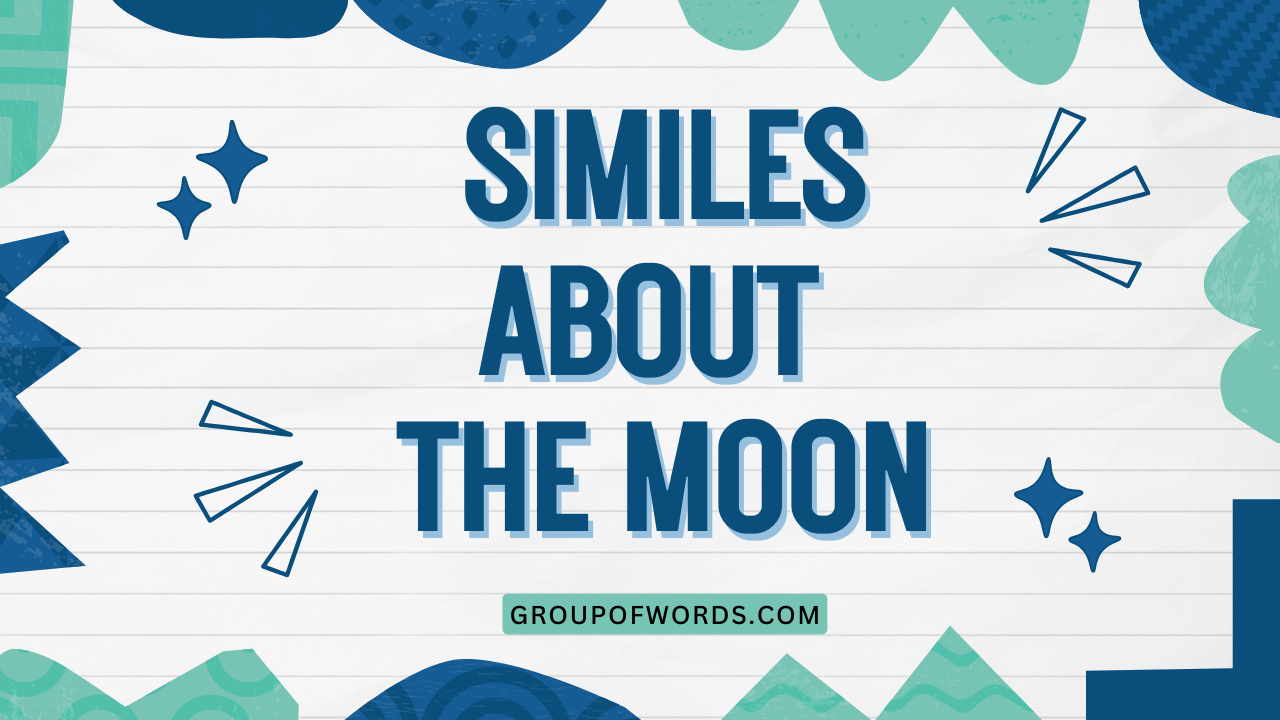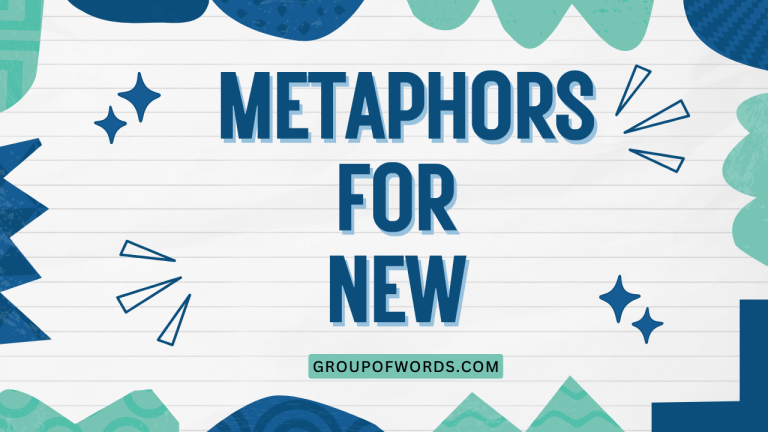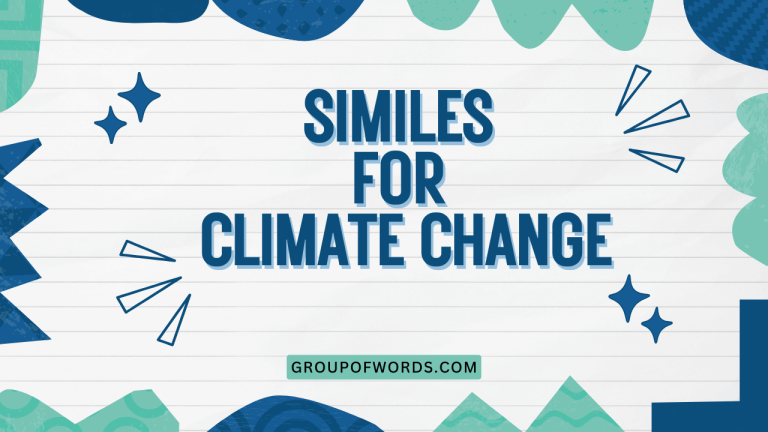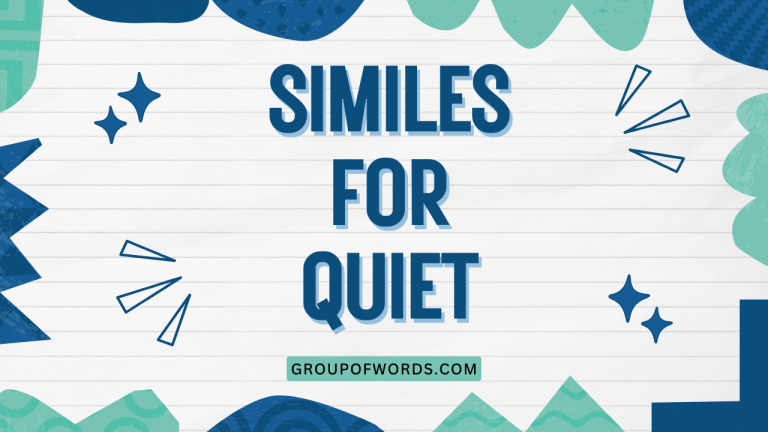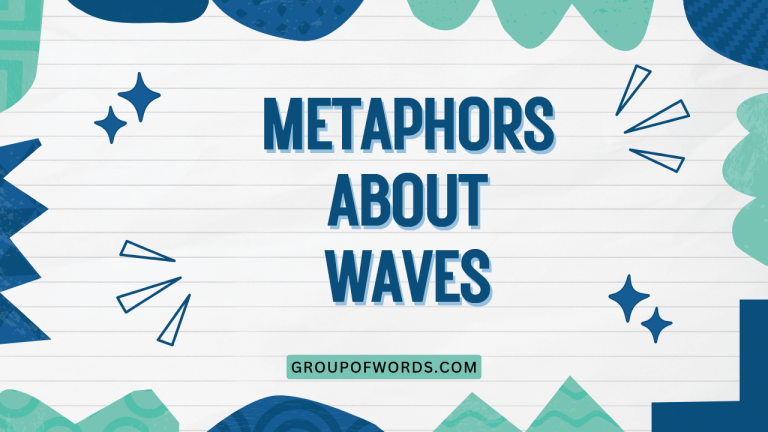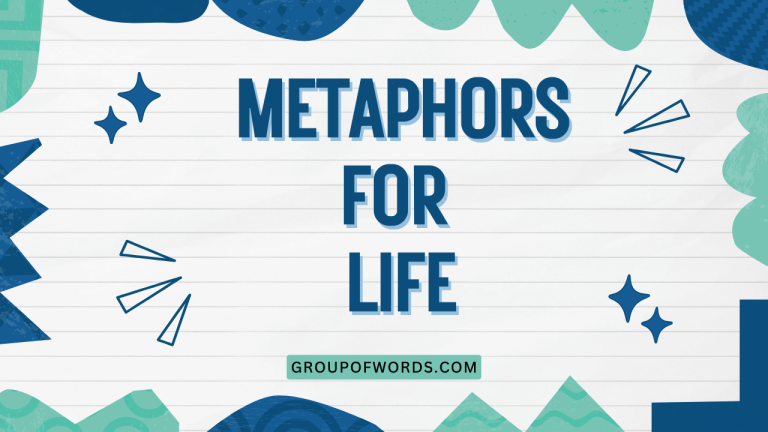Moon Similes: A Guide to Figurative Language
Similes are powerful tools in the English language, allowing us to create vivid imagery and make comparisons that resonate with our audience. When we use similes about the moon, we tap into a rich source of symbolism and evocative descriptions.
Understanding how to construct and interpret these similes enhances both our writing and reading comprehension. This article provides a comprehensive guide to moon similes, exploring their structure, usage, and impact.
This guide will benefit students learning figurative language, writers seeking to add depth to their prose, and anyone interested in appreciating the beauty and versatility of the English language.
Table of Contents
- Definition of Simile
- Structural Breakdown of Moon Similes
- Types of Moon Similes
- Examples of Moon Similes
- Usage Rules for Moon Similes
- Common Mistakes with Moon Similes
- Practice Exercises
- Advanced Topics in Moon Similes
- Frequently Asked Questions
- Conclusion
Definition of Simile
A simile is a figure of speech that directly compares two different things using the words “like” or “as.” The purpose of a simile is to create a vivid image or a deeper understanding by drawing a parallel between the two subjects. Similes are essential for adding color, depth, and clarity to writing, making it more engaging and memorable for the reader. They allow writers to express abstract concepts in a more concrete and relatable way.
In the context of moon similes, we are specifically comparing the moon to something else, highlighting a shared characteristic. This comparison can be based on appearance, behavior, or any other attribute that the writer wishes to emphasize.
The effectiveness of a simile lies in its ability to create a fresh perspective and evoke a specific emotion or feeling.
Similes are often contrasted with metaphors, which also make comparisons but do so implicitly, without using “like” or “as.” While both are powerful tools, similes offer a more direct and explicit comparison, making them easier to understand and analyze. The choice between a simile and a metaphor depends on the desired effect and the specific context of the writing.
Structural Breakdown of Moon Similes
A moon simile typically follows a simple structure: Subject (the moon) + linking word (“like” or “as”) + object of comparison. The object of comparison is the thing to which the moon is being compared.
Understanding this structure is crucial for both creating and interpreting similes effectively.
The basic pattern is as follows:
The moon is like/as [object of comparison].
For example:
- The moon is like a silver coin.
- The moon is as bright as a spotlight.
The object of comparison should be something that shares a quality with the moon, creating a meaningful connection. The stronger the connection, the more effective the simile will be.
Also, the object should be something that the reader can easily visualize and understand.
The order of the elements can sometimes be altered for stylistic effect, but the core components remain the same. For instance, instead of “The moon is like a pearl,” one could write “A pearl, the moon shone like,” but such inversions are less common.
Types of Moon Similes
Moon similes can be categorized based on the aspect of the moon being emphasized in the comparison. This categorization helps in understanding the nuances and variations in how the moon can be described figuratively.
Similes Based on Appearance
These similes focus on the visual characteristics of the moon, such as its shape, color, or brightness. They often use concrete objects or images to create a vivid picture in the reader’s mind.
Similes Based on Emotion
These similes evoke emotional responses by associating the moon with feelings such as loneliness, peace, or mystery. They often rely on abstract concepts and metaphorical language to convey these emotions.
Similes Based on Function
These similes describe the moon’s role or effect on the environment, such as its influence on tides or its function as a source of light. They often use action verbs and dynamic imagery to illustrate these functions.
Similes Based on Size or Distance
These similes focus on the moon’s apparent size or its distance from Earth. They often use exaggerations or comparisons to objects that are familiar to the reader, making the scale more comprehensible.
Examples of Moon Similes
Below are tables containing various examples of moon similes, categorized by the aspect of the moon they emphasize. Each table provides a range of similes to illustrate the different ways the moon can be described figuratively.
Appearance-Based Moon Similes
These similes focus on the moon’s visual characteristics, such as its shape, color, and brightness. They paint a vivid picture for the reader.
| Simile | Explanation |
|---|---|
| The moon is like a silver coin in the sky. | Emphasizes the moon’s color and shape. |
| The moon is as round as a dinner plate. | Focuses on the moon’s circular shape. |
| The moon is like a ghostly face peering down. | Highlights the moon’s pale color and ethereal quality. |
| The moon is as bright as a spotlight on a stage. | Emphasizes the moon’s intense brightness. |
| The moon is like a slice of lemon in the dark. | Highlights the moon’s crescent shape and pale yellow hue. |
| The moon is as luminous as a pearl. | Compares the moon to a lustrous gem. |
| The moon is like a celestial eye watching over us. | Evokes a sense of observation and mystery. |
| The moon is as white as fresh snow. | Emphasizes the moon’s pure white color. |
| The moon is like a chipped teacup in the inky sky. | Focuses on the imperfect shape and dark surroundings. |
| The moon is as faint as a distant memory. | Highlights the moon’s dimness and ethereal quality. |
| The moon is like a beacon in the night. | Emphasizes its guiding light. |
| The moon is as pale as a ghost. | Highlights its pallid color. |
| The moon is like a hole punched in the night. | Illustrates its contrast against the darkness. |
| The moon is as serene as a sleeping child. | Evokes a sense of peace and tranquility. |
| The moon is like a silent observer. | Highlights its watchful presence. |
| The moon is as mysterious as a hidden treasure. | Emphasizes its enigmatic nature. |
| The moon is like a celestial lantern. | Illustrates its role as a light source. |
| The moon is as cold as ice. | Highlights its lack of warmth. |
| The moon is like a silver sickle hanging in the sky. | Focuses on the crescent moon’s curved shape. |
| The moon is as smooth as polished glass. | Emphasizes its sleek surface. |
Emotion-Based Moon Similes
These similes focus on the emotional responses the moon evokes, such as loneliness, peace, or mystery. They use abstract concepts to convey these feelings.
| Simile | Explanation |
|---|---|
| The moon is like a silent confidant in the lonely night. | Evokes feelings of companionship and solitude. |
| The moon is as calming as a lullaby. | Highlights its soothing effect. |
| The moon is like a haunting melody in the darkness. | Evokes a sense of mystery and melancholy. |
| The moon is as peaceful as a sleeping angel. | Emphasizes its serene and tranquil nature. |
| The moon is like a watchful guardian over the world. | Evokes feelings of safety and protection. |
| The moon is as melancholic as a forgotten dream. | Highlights its sad and reflective quality. |
| The moon is like a beacon of hope in the darkest night. | Evokes feelings of optimism and guidance. |
| The moon is as serene as a quiet meditation. | Emphasizes its calming and peaceful presence. |
| The moon is like a reminder of what once was. | Focuses on nostalgia and memories. |
| The moon is as mysterious as a hidden secret. | Highlights its enigmatic nature. |
| The moon is like a symbol of enduring love. | Emphasizes its timeless quality. |
| The moon is as comforting as a warm embrace. | Evokes a sense of security and solace. |
| The moon is like a silent promise of a new dawn. | Illustrates hope and renewal. |
| The moon is as inspiring as a work of art. | Evokes feelings of awe and wonder. |
| The moon is like a mirror reflecting our deepest emotions. | Highlights its introspective quality. |
| The moon is as enchanting as a fairy tale. | Emphasizes its magical and captivating nature. |
| The moon is like a silent observer of our lives. | Illustrates its detached yet present role. |
| The moon is as gentle as a mother’s touch. | Evokes feelings of care and tenderness. |
| The moon is like a symbol of cycles and change. | Focuses on its phases and transformations. |
| The moon is as constant as the tides. | Emphasizes its reliable presence. |
Function-Based Moon Similes
These similes focus on the moon’s role or effect on the environment, such as its influence on tides or its function as a source of light. They use action verbs to illustrate these functions.
| Simile | Explanation |
|---|---|
| The moon pulls the tides like a puppeteer controls strings. | Emphasizes the moon’s influence on the tides. |
| The moon guides lost sailors like a compass. | Highlights its function as a navigational aid. |
| The moon lights up the night like a natural lamp. | Illustrates its role as a source of light. |
| The moon watches over the earth like a silent guardian. | Emphasizes its protective presence. |
| The moon draws out nocturnal creatures like a magnet attracts iron. | Highlights its influence on animal behavior. |
| The moon illuminates the landscape like a soft floodlight. | Illustrates its gentle and widespread illumination. |
| The moon regulates the ocean’s rhythm like a conductor leads an orchestra. | Emphasizes its control over the tides. |
| The moon silvers the trees like a painter brushes on highlights. | Highlights its effect on the landscape. |
| The moon draws secrets from the shadows, like a detective uncovers clues. | Focuses on its ability to reveal hidden things. |
| The moon whispers to the waves, like a lover sharing secrets. | Highlights its connection to the ocean. |
| The moon paints the world in shades of gray, like an artist using charcoal. | Emphasizes its effect on the colors of the night. |
| The moon’s gravity tugs at our dreams, like a tide pulling at the shore. | Illustrates its influence on our subconscious. |
| The moon awakens the wolves’ howls, like a conductor leading a chorus. | Highlights its effect on animal behavior. |
| The moon casts long shadows, like fingers reaching across the land. | Emphasizes its ability to create dramatic effects. |
| The moon watches over sleeping cities, like a parent watching over a child. | Illustrates its protective role. |
| The moon reflects the sun’s light, like a mirror amplifying its brilliance. | Highlights its ability to enhance light. |
| The moon guides travelers through the night, like a lighthouse guiding ships. | Emphasizes its navigational function. |
| The moon influences the growth of plants, like a gardener nurturing seedlings. | Illustrates its effect on the natural world. |
| The moon inspires poets and artists, like a muse whispering inspiration. | Focuses on its role as a creative catalyst. |
| The moon marks the passage of time, like a clock ticking away the seconds. | Emphasizes its connection to the lunar cycle. |
Size and Distance-Based Moon Similes
These similes focus on the moon’s apparent size or its distance from Earth. They use comparisons to familiar objects to make the scale more comprehensible.
| Simile | Explanation |
|---|---|
| The moon seems as close as a streetlamp, yet galaxies away. | Highlights the paradoxical sense of proximity and distance. |
| The moon looks like a small coin tossed high in the vast expanse. | Emphasizes its small apparent size relative to the sky. |
| The moon appears as large as a car tire when it rises on the horizon. | Compares its apparent size to a familiar object. |
| The moon feels as unreachable as a star in the distant heavens. | Highlights its remoteness and inaccessibility. |
| The moon hangs like a distant ornament on the Christmas tree of the night. | Evokes a sense of smallness and preciousness. |
| The moon floats like a tiny boat on an endless ocean of space. | Emphasizes its small size and the vastness of space. |
| The moon seems as far away as the edge of the universe itself. | Highlights its extreme distance. |
| The moon appears as insignificant as a grain of sand on a cosmic beach. | Emphasizes its smallness in the grand scheme of things. |
| The moon is like a marble dropped into a bottomless well. | Illustrates its perceived distance and the depth of space. |
| The moon is as distant as a forgotten planet, yet still visible. | Highlights the contrast between its remoteness and visibility. |
| The moon seems as close as a dream, yet impossibly far to reach. | Evokes a sense of nearness and unattainability. |
| The moon looks like a hole in the fabric of the sky, revealing an endless void. | Emphasizes its distance by suggesting a portal to somewhere far away. |
| The moon is as small as a tear in the eye of the night. | Highlights its diminutive size in the context of the vast night sky. |
| The moon is like a distant memory, fading in and out of view. | Emphasizes its perceived distance and ethereal quality. |
| The moon seems no bigger than a dime held at arm’s length. | Compares its apparent size to a familiar, small object. |
| The moon is as unreachable as a star in a child’s drawing. | Highlights its remoteness and idealized nature. |
| The moon floats like a distant island in a sea of stars. | Emphasizes its isolation and the vastness of space. |
| The moon is as far away as the dreams we chase but can never grasp. | Highlights its unattainability. |
| The moon looks like a tiny pearl lost in a velvet box. | Emphasizes its small size and the surrounding darkness. |
| The moon seems as close as a reflection, yet infinitely beyond our reach. | Evokes a sense of nearness and impossibility. |
Usage Rules for Moon Similes
Using moon similes effectively requires attention to detail and an understanding of the nuances of language. Here are some key rules to follow:
- Choose relevant comparisons: The object of comparison should share a meaningful quality with the moon. Avoid comparisons that are too abstract or unrelated.
- Use clear and concise language: Similes should be easy to understand. Avoid overly complex or convoluted phrasing.
- Consider the context: The appropriateness of a simile depends on the context of the writing. A simile that works well in a poem may not be suitable for a scientific report.
- Avoid clichés: Overused similes can sound stale and unoriginal. Strive to create fresh and imaginative comparisons.
- Maintain consistency: Ensure that the simile aligns with the overall tone and style of the writing.
Furthermore, pay attention to the emotional impact of the simile. Does it evoke the desired feeling or create the intended image?
Experiment with different comparisons to find the most effective one.
Common Mistakes with Moon Similes
Even experienced writers can make mistakes when using similes. Here are some common errors to avoid:
| Incorrect | Correct | Explanation |
|---|---|---|
| The moon is like a car. | The moon is like a streetlamp in the sky. | The comparison is too broad and lacks a clear connection. |
| The moon is as big as a building. | The moon appears as big as a car tire on the horizon. | The comparison is an exaggeration and not relatable. |
| The moon is like happiness. | The moon is as calming as a lullaby. | The comparison is too abstract and lacks a concrete image. |
| The moon is like the sun. | The moon reflects the sun’s light, like a mirror amplifying its brilliance. | The comparison is obvious and unoriginal. |
| The moon is as a light. | The moon is like a natural lamp. | Incorrect use of “as.” |
| The moon is like. | The moon is like a silver coin. | Incomplete simile. |
Always double-check your similes to ensure they are clear, relevant, and original. Seek feedback from others to identify any potential issues.
Practice Exercises
Test your understanding of moon similes with these practice exercises. For each question, create a simile using “like” or “as” to describe the moon.
Exercise 1: Fill in the Blanks
Complete the following sentences with appropriate similes about the moon.
| Question | Answer |
|---|---|
| The moon is as ____________ as ____________. | The moon is as **white** as **fresh snow**. |
| The moon is like a ____________ in the ____________. | The moon is like a **silver coin** in the **sky**. |
| The moon pulls the tides like a ____________ controls ____________. | The moon pulls the tides like a **puppeteer** controls **strings**. |
| The moon is as ____________ as a ____________. | The moon is as **calming** as a **lullaby**. |
| The moon is like a ____________ watching over ____________. | The moon is like a **silent guardian** watching over **the world**. |
| The moon appears as ____________ as a ____________ on the horizon. | The moon appears as **big** as a **car tire** on the horizon. |
| The moon is like a ____________ in the ____________ of space. | The moon is like a **tiny boat** in the **ocean** of space. |
| The moon is as ____________ as a ____________ hidden secret. | The moon is as **mysterious** as a **hidden secret**. |
| The moon is like a ____________ in the ____________. | The moon is like a **beacon** in the **night**. |
| The moon is as ____________ as a ____________. | The moon is as **serene** as a **sleeping child**. |
Exercise 2: Create Your Own Similes
Write your own similes about the moon, focusing on different aspects such as appearance, emotion, or function.
- Describe the moon’s appearance using a simile.
- Describe the emotion the moon evokes using a simile.
- Describe the moon’s function using a simile.
- Describe the moon’s size or distance using a simile.
- Create a simile that combines two or more aspects of the moon.
- Write a simile about the moon that uses an unusual or unexpected comparison.
- Write a simile about the moon’s effect on the ocean.
- Write a simile about the moon’s effect on people.
- Write a simile about the moon’s phases.
- Write a simile about the moon during a lunar eclipse.
Possible answers:
- The moon is like a silver shield in the night sky.
- The moon is as lonely as a single streetlight in a deserted town.
- The moon guides lost souls like a lighthouse guides ships.
- The moon seems as far away as a dream we can’t quite remember.
- The moon is like a silent guardian, watching over the world with a gentle glow.
- The moon is like a chipped fingernail on the hand of night.
- The moon pulls the ocean’s heartstrings like a cosmic lover.
- The moon makes us dreamers, as if sprinkling stardust on our eyelids.
- The moon’s phases are like the pages of an ancient, celestial book.
- The moon during a lunar eclipse is like a ghost shrouded in shadow.
Advanced Topics in Moon Similes
For advanced learners, exploring the nuances of moon similes can involve analyzing their cultural significance and literary applications. Different cultures may have unique interpretations of the moon, which can be reflected in their similes.
Additionally, studying how famous authors have used moon similes can provide insights into their writing styles and thematic concerns.
Consider exploring the use of extended similes, where the comparison is developed over several sentences or even paragraphs. This technique can create a more profound and lasting impression on the reader.
Another advanced topic is the use of unconventional similes that challenge traditional associations and create a sense of surprise or irony. Experiment with combining unexpected elements to create a unique and memorable effect.
Frequently Asked Questions
- What is the difference between a simile and a metaphor?
A simile directly compares two things using “like” or “as,” while a metaphor implies a comparison without using these words. For example, “The moon is like a silver coin” (simile) versus “The moon is a silver coin” (metaphor). Similes are generally more explicit, while metaphors are more suggestive.
- How can I make my similes more original?
Avoid clichés and overused comparisons. Instead, look for fresh and unexpected connections between the moon and other objects or concepts. Consider using sensory details and vivid imagery to create a unique and memorable effect. Think about the specific context of your writing and tailor your similes to fit that context.
- What are some common pitfalls to avoid when using similes?
Avoid comparisons that are too broad or unrelated, using overly complex language, and creating similes that are inconsistent with the overall tone of your writing. Always ensure that your similes are clear, relevant, and original. Also, avoid mixing metaphors and similes within the same sentence or paragraph.
- How do I choose the right object of comparison for a moon simile?
The object of comparison should share a meaningful quality with the moon that you want to emphasize. Consider the visual characteristics of the moon (shape, color, brightness), the emotions it evokes (loneliness, peace, mystery), or its function in the environment (influence on tides, source of light). Choose an object that is familiar to your audience and that will create a clear and vivid image in their minds.
- Can similes be used in all types of writing?
Similes can be used in various types of writing, including poetry, fiction, essays, and even scientific reports. However, the appropriateness of a simile depends on the context and the intended audience. In formal or technical writing, similes should be used sparingly and with caution to avoid sacrificing clarity and precision. In creative writing, similes can be used more freely to add color, depth, and emotional impact.
- How can I improve my ability to create effective similes?
Practice is key. Start by analyzing existing similes and identifying what makes them effective. Experiment with different comparisons and seek feedback from others. Read widely and pay attention to how authors use figurative language. Keep a notebook of interesting observations and ideas that you can use as inspiration for your own similes.
- Are there cultural differences in how the moon is perceived and described?
Yes, different cultures may have unique interpretations of the moon, which can be reflected in their similes and other forms of figurative language. For example, in some cultures, the moon is associated with femininity and fertility, while in others, it is associated with masculinity and power. These cultural differences can influence the types of comparisons that are used to describe the moon.
- How can I use moon similes to enhance my poetry or prose?
Moon similes can add depth, color, and emotional impact to your writing. Use them to create vivid images, evoke specific feelings, and convey abstract concepts in a more concrete way. Consider using extended similes to develop the comparison over several sentences or paragraphs. Experiment with unconventional similes to challenge traditional associations and create a sense of surprise or irony.
Conclusion
Mastering moon similes is a valuable skill for anyone seeking to enhance their writing and deepen their understanding of figurative language. By understanding the structure, types, and usage rules of moon similes, you can create vivid and memorable comparisons that resonate with your audience.
Remember to choose relevant comparisons, use clear language, and avoid clichés. With practice and attention to detail, you can unlock the power of moon similes to add depth, color, and emotional impact to your writing.
The key takeaways from this article include the importance of understanding the basic structure of a simile, the different types of moon similes based on appearance, emotion, and function, and the common mistakes to avoid when using similes. By applying these principles and practicing regularly, you can develop your ability to create effective and original moon similes.
As a final tip, always read your similes aloud to ensure they sound natural and flow smoothly within the context of your writing.
